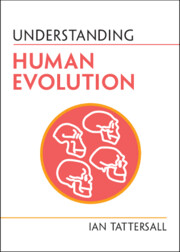Book contents
- >Understanding Human Evolution
- Series page
- Understanding Human Evolution
- Copyright page
- Reviews
- Dedication
- Frontispiece
- Contents
- Maps
- Foreword
- Preface
- Acknowledgments
- 1 Evolution
- 2 Technology: Dating, Diets, and Development
- 3 Discovery and Interpretation of the Human Fossil Record: The Early Days
- 4 Discovery and Interpretation of the Human Fossil Record: Later Developments
- 5 Early Bipeds
- 6 The Muddle in the Middle
- 7 Homo heidelbergensis and the Neanderthals
- 8 The Emergence and Spread of Homo sapiens
- Epilogue
- Summary of Common Misunderstandings
- References and Further Reading
- Figure Credits
- Index
8 - The Emergence and Spread of Homo sapiens
Published online by Cambridge University Press: 21 July 2022
- >Understanding Human Evolution
- Series page
- Understanding Human Evolution
- Copyright page
- Reviews
- Dedication
- Frontispiece
- Contents
- Maps
- Foreword
- Preface
- Acknowledgments
- 1 Evolution
- 2 Technology: Dating, Diets, and Development
- 3 Discovery and Interpretation of the Human Fossil Record: The Early Days
- 4 Discovery and Interpretation of the Human Fossil Record: Later Developments
- 5 Early Bipeds
- 6 The Muddle in the Middle
- 7 Homo heidelbergensis and the Neanderthals
- 8 The Emergence and Spread of Homo sapiens
- Epilogue
- Summary of Common Misunderstandings
- References and Further Reading
- Figure Credits
- Index
Summary
There is little, if anything, in the hominin fossil record that can be said to closely anticipate the very derived anatomy of our species Homo sapiens. Compared to other members of the genus Homo, modern humans are exceptionally slenderly built, with narrow hips and barrel-shaped rib cages that taper both at the top and the bottom. Our skulls are high, short, and rounded (Figure 8.1); and instead of projecting, our very small faces are retracted beneath the front of our braincases. Our brow ridges vary from modestly protrusive to barely detectable, but they are invariably bipartite, with central and lateral surfaces separated by an oblique furrow. We are also alone among the hominins in having a true chin at the front of the lower jaw. This takes the form of an inverted “T,” with a vertical ridge in the midline of the jaw atop a horizontal bar running between a pronounced tubercle on each side.
Keywords
- Type
- Chapter
- Information
- Understanding Human Evolution , pp. 129 - 147Publisher: Cambridge University PressPrint publication year: 2022

